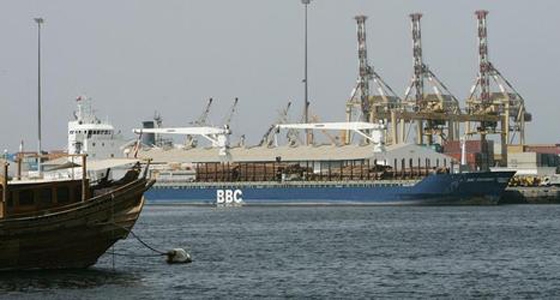New investments by maritime services firms based in the port of Duqm could help Oman boost its credentials as a shipping and trade Centre, parlaying its position close to major trade routes into profits, though it will have to contend with established rivals in and around the Gulf.
In early July, Oman Oil Marketing Company (OOMCO) announced plans to develop an oil terminal at Duqm to provide bunkering services to the regional market. The move seeks to tap into the increasing maritime trade along Oman’s Indian Ocean coast and attract more customers to the port itself, taking advantage of new business opportunities that are opening up, according to the company’s CEO, Omar Ahmed Salim Qatan.
“We are in the process of negotiations to acquire a footprint in Duqm by establishing a terminal and bunkering services,” Qatan told local media in July. “We hope to conclude negotiations in 2014. We have our master plan and are in liaison with the Duqm port authority, but it is too early for me to give a time frame as the process is still on.”
OOMCO already provides bunkering services at the port of Sohar, to the north-west of Muscat on the Gulf of Oman, operating in partnership with German firm Matrix Marine Holding. The company was loading around 15,000 tons of fuel a month from its Sohar facility as of the end of last year, a figure it foresees rising to 45,000 tons a month in 2013. As is the case at Sohar, OOMCO intends to offer marine fuel and gas, along with lubricants and other services.
The expansion into Duqm is part of what Qatan said is an ongoing program of diversifying the company’s activities beyond its main focus of automotive and aviation oil distribution and sales.
According to a report issued in early July by maritime research firm Drewry, diversity is what the port of Duqm needs. While questioning the need for a container terminal at the port, the report said Duqm has the potential to be a multi-purpose facility through its development as a hydrocarbons-based industrial centre.
This diversity will be increased through the expansion of the maritime services capacity at Duqm, which the study said was well-positioned to capture regional and international trade. Berthing at the Omani port involves minimal diversion of 200 km from the main Asia-Europe shipping lanes, compared to Dubai, which is some 2100 km off the route between Suez and Singapore.
The move to Duqm also makes sound business sense for OOMCO, as the port is being developed as Oman’s main center for hydrocarbons and petrochemicals. As such, OOMCO will be able to access products direct from the $6bn refinery that is to be built as part of the port’s industrial complex, rather than buying much of its stock from one of its competitors, the bunkering center at Fujairah in the UAE.
It is not just in the bunkering segment that Oman’s maritime services sector is looking to expand. The state-owned Oman Drydock Company (ODC) is also eyeing new investments for its Duqm base, building on the capacity of its yard, which began operating in the second quarter of 2012.
Company officials have said plans are in the works for a floating dry dock to supplement existing facilities, which will be capable of hosting up to 10 ships of various sizes. Having served 76 vessels in its first year of operation, ODC is also aiming to diversify, developing the capacity to repair and maintain oil rigs and other specialist vessels such as derrick barges, dredgers and pipe-laying barges as part of a business plan to boost revenue to $200m annually.
With Duqm being developed as a major seaborne trade and trans-shipment hub, as well as a hydrocarbons and petrochemicals industrial center, there will be increasing opportunities for maritime service providers, along with associated side industries and suppliers. The challenge for companies such as ODC and OOMCO will come from other service centers in the region, particularly inside the Gulf where there are a number of large shipyards and bunkering terminals, such as those in Dubai.
Oxford Business Group
3 August






















































